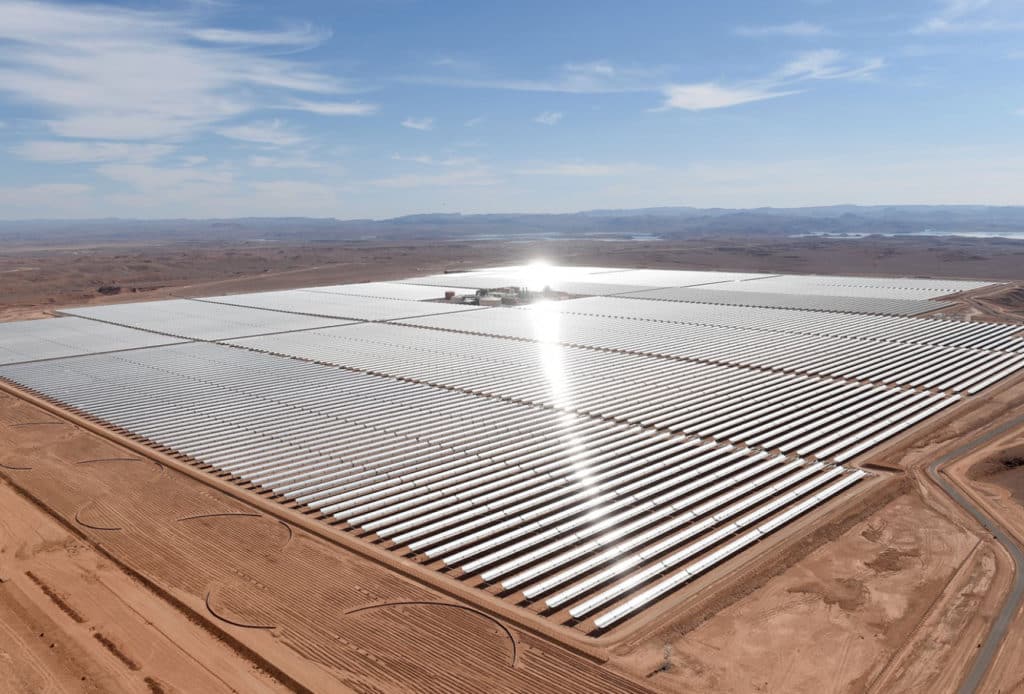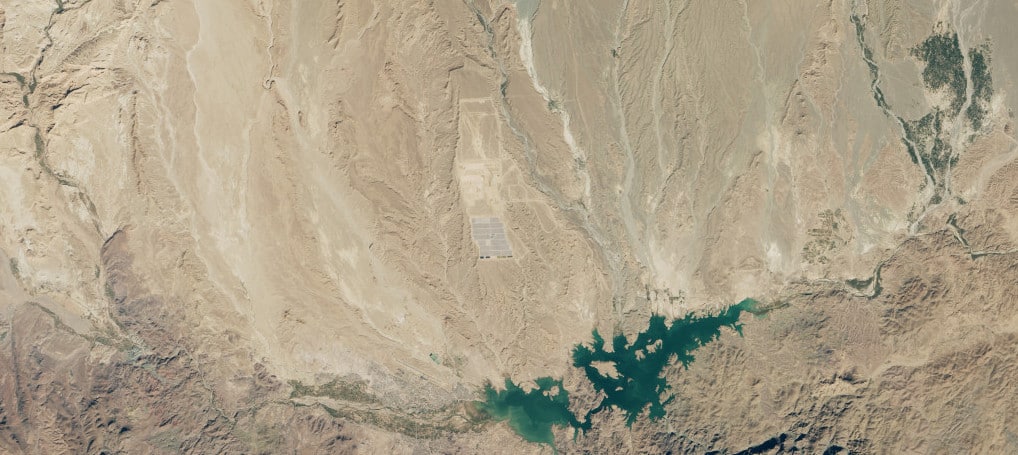
Hot on the heels of the Paris Climate Summit, the small North African nation of Morocco set an unprecedented example for the rest of the world. King Mohammed VI unveiled Noor I in February 2016, the first phase of a massive concentrated solar power complex in the Sahara Desert. With the completion of the remaining phases of the project, planned for 2018, the parabolic solar installation will supply more than one million people with all the power they need. It will also significantly reduce Morocco’s carbon emissions, a task critical to slowing climate change.
The Inspiration for Morocco’s Bold Investment
As the largest importer of fossil fuel-generated power in the Middle East, Morocco once purchased 97 percent of its energy from other nations, according to a World Bank press release. What’s more, its power demand is expanding at a rate of 7 percent each year. However, recognizing the Sahara Desert to be an ideal location for a solar installation, the King is determined to reduce his country’s dependence on foreign power sources by generating solar energy.
Compressed Solar Technology
Noor I, located near the Moroccan town of Ouarzazate, utilizes a distinctive solar technology that is unfamiliar to most of us. Variously known as compressed solar, solar thermal and parabolic solar, the technology does not use traditional photovoltaic panels.
Instead, numerous curved mirrors nearly 40 feet high direct solar rays onto a specially coated receiver pipeline filled with heat transfer fluid. The radiation heats the fluid to 739 degrees F, reports Kathryn Hansen of NASA Earth Observatory. The resulting steam turns turbines that generate electricity.
The plant stores excess heat in molten salt tanks for use after dark. The Noor I facility can continue generating electric current for three hours after the sun goes down. Future phases, Noor II and Noor III, will expand this capacity so that energy production continues for 20 hours each day.
Concentrated solar power (CSP) is an especially efficient technology in regions near the equator that field direct solar rays. CSP relies on the same generating method as standard coal-fired or nuclear plants. The great part, though, is that unlike fossil fuel and nuclear plants, CSP facilities do not emit carbon dioxide, a greenhouse gas instrumental in climate change.
Noor I alone will offset 240 thousand tons of CO2 each year. Once all phases of the project are complete, the Ouarzazate complex will offset up to 533 thousand tons of carbon emissions annually.
Putting Solar Power Into Perspective
The total capacity of solar-sourced electricity worldwide in 2014 was 178GW. The countries that produced the most solar power in that year are:
- Germany – 21.5 percent
- China and Taiwan – 16.3 percent
- The rest of Europe – 14.5 percent
- Japan – 13.1 percent
- Italy – 10.4 percent
- United States – 10.3 percent
Before Morocco’s Ouarzazate facility opened, the only other nation on the continent producing commercial solar was South Africa. Once all three Noor CSP plants and Noor IV, a PV solar facility, are online, the sun will supply a third of the nation’s renewable energy, with wind and hydro-power also contributing one third apiece. The four solar plants will share an installed capacity 580MW.
Once the Noor CSP solar facility is complete, it will be the largest of its kind on the planet. Solar Energy Generating Systems in California, with an installed capacity of 354MW, currently holds that title. The Agua Caliente CSP project in Arizona has an installed capacity of 290MW.
Installed Capacity Versus Annual Output
The installed, or nameplate, capacity of a solar power plant is simply the sum of the rated capacity for each of its components. For example, if a PV solar facility has 1000 panels, each rated at 250 watts, the capacity would be 250 x 1000, or 250,000W (0.25MW).
To figure the capacity factor of the plant, you calculate the ratio of power produced over a year’s time to its installed capacity. Then, you divide the result by the installed capacity. For examples, let’s say that a plant rated for 10kW actually produces 14,000kWh (kilowatt hours) of electricity annually. Continuous operation at its rated capacity would produce 87,600kWh (24 hours times 365 days times 10kW). When you divide actual production (14,000kWh) by capacity (87,600kW), you see that the capacity factor of this particular plant is just under 16 percent.
The main influence on actual output is the amount of available sunlight. Two plants with identical nameplate capacities, one in Maine and the other in Florida, cannot produce equal amounts of power due to the vast difference in solar availability.
Because the Ouarzazate facility is ideally sited to receive maximum direct sunlight, it has a high capacity factor. This means that Morocco’s potential for converting solar radiation to electricity is excellent, far better than that of many other locations in the world. Therefore, it makes sense that this small North African nation may someday be a major energy source for the surrounding region.
Morocco’s Ambitious Energy Goals

King Mohammed IV has set an ambitious goal for his country to be 52 percent energy independent by 2030 through the use of domestically sourced renewable energy. Plans are underway to supply nearby countries with clean energy in the decades to come. Morocco is currently the only African nation with an established power link to the European continent.
The country has four additional solar power plants on its drawing board that are slated for completion by 2020. Once all five facilities are online, the country’s total capacity will be 2000MW.
Morocco was the first developing nation to pledge a reduction in carbon emissions – 32 percent by 2030 – and is taking decisive action to keep that pledge.
As the host country for the next UN climate summit in October 2016, Morocco is setting a timely example the rest of the world should follow.

